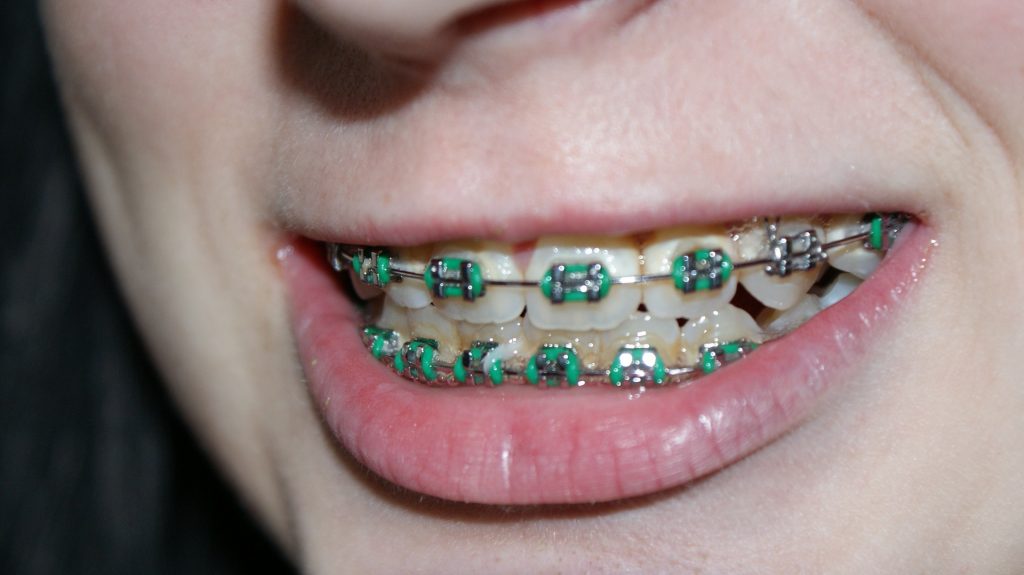
Getting braces is the first step towards perfectly aligned teeth. While it does eventually let you show off your teeth with a radiant, confident smile and also give you an ideal bite, the process in itself is not a painless one (something that a lot of people won’t tell you). While the pain is not unbearable in most cases, your gums will be sensitive and sore every time the orthodontist tightens the wires.
Getting the Braces Placed
Actually, getting the braces put on your teeth is not the really painful part of getting cosmetic dentistry – even if putting the braces on your teeth can easily take between one to two hours.
Essentially, the orthodontist will follow the following steps:
Step 1: Putting bands around your back molars
Placing the bands will only require a slight pressure or pinching and won’t be painful.
Step 2: Fixing the brackets
A special glue will be applied to your teeth so that the orthodontist can stick the brackets in place. While it’s true that this glue generally doesn’t taste good, it won’t hurt.
Step 3: Placing the wires
Once the brackets have been placed, the orthodontist can connect the brackets with wires before finally securing everything with elastic bands.
Once the braces have been securely placed, you will begin to experience some pain and soreness in your teeth and gums within a few hours. This pain generally lasts for about a week.
When they’re tightened
The next time you will experience that pain and soreness is when the orthodontist adjusts or tightens your braces. In order to fix alignment problems, the braces put constant pressure on your teeth so that they move into a straighter position. The treatment generally lasts for about two years but can vary from one person to another, depending on factors such as the type of appliance you’re using and the problems your orthodontist is trying to fix.
You will be expected to visit the orthodontist every few weeks so that they can evaluate your teeth, check on the amount of pressure the braces are producing and adjust the braces accordingly. The braces have to be adjusted regularly because the constant pressure causes the teeth to move, resulting in a decreased amount of tension. This decrease in tension and movement of teeth lead to a loss of effectiveness of the braces. At these appointments, your orthodontist will tighten the wires, springs, or elastic bands to increase the tension.
Do not expect to experience the same level of discomfort and pain you experienced when you first got your braces on. It will not be as bad and you will get used to the increased pressure on your teeth after a few days. But even if you do get used to the pain, it doesn’t change the fact that you are suffering and can barely eat. Read on for tips on how to manage the pain.
Dealing with braces pain
To be honest, you will have to be patient either way. This is a process that cannot be rushed, and you’ll have to learn to expect the pain and give it time. Even if the pain of newly tightened braces is awful, remember that it will only last a few days and that a healthier, beautiful smile is worth the discomfort as it will always be with you.
While you try to adjust to your braces and wait for the pain to subside, below are a few things you can try to help alleviate the mouth pain from braces in the meantime:
Oral Anaesthetics or Over-the-counter Pain Medicine

This is a simple way to get some braces pain relief. You can either rub an oral aesthetic directly on the sensitive teeth and gums to numb your teeth and gums, or you can take over-the-counter pain medicine. Just ensure you read the instructions on the medicine and follow the dosage instructions carefully.
An Icepack or Cold Ice Water
You can decrease the soreness and discomfort by resorting to icepacks, gel icepacks or by sipping on ice-cold water. The cold temperature helps reduce inflammation and will also numb the mouth, so you don’t feel the pain.
Soft foods

You will have to avoid several foods, such as hard candy, gum and hard to chew foods (especially if you have traditional wire braces). You may want to stick to soft foods like frozen yoghurt, soups, smoothies, mashed potatoes, macaroni and cheese, soft fruits (bananas and berries) and oatmeal.
Orthodontic Wax
Orthodontic wax is a special wax that will protect the inside of your cheeks and gums from the brackets. The brackets of the braces can irritate the inside of your mouth, increasing your level of discomfort. The wax protects your mouth by creating a barrier that keeps the sharp ends of the brackets from irritating your mouth.


